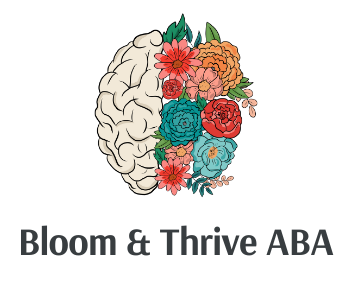ABA Therapy Insights and Resources for Parents in Kilmarnock, VA

Communication is a fundamental skill that allows individuals to express their needs, wants, and emotions. For children with autism or other developmental delays, communication can be challenging. One of the most effective ways ABA (Applied Behavior Analysis) therapy helps improve communication is by teaching manding —a skill that focuses on making requests. What is Manding? Manding is a type of verbal behavior where an individual asks for something they want or need. This can be done through speech, gestures, sign language, or alternative communication methods like picture exchange systems (PECS) or speech-generating devices. For example, a child might: Say “juice” to request a drink Point to a toy to indicate they want to play Use a communication device to say “help” when they need assistance Manding is one of the first communication skills taught in ABA therapy because it is naturally motivating—when a child successfully makes a request, they are immediately reinforced by receiving what they asked for. How ABA Therapy Teaches Manding ABA therapists use structured and naturalistic teaching methods to help children develop manding skills. Here’s how: 1. Identifying Motivators Therapists first identify what the child finds motivating—this could be a favorite toy, snack, or activity. Motivation is key because manding is all about asking for things the child actually wants. 2. Encouraging Requests Once a motivating item is identified, the therapist creates opportunities for the child to request it. For example: Holding a favorite toy just out of reach to encourage the child to ask for it Giving a small piece of a snack instead of the whole thing, prompting the child to request more Modeling the correct word or sign and reinforcing even small attempts at communication 3. Expanding Communication As the child progresses, therapists encourage more complex requests. Instead of just saying “juice,” the child may learn to say “I want juice” or “Can I have juice, please?” ABA therapy gradually builds on these skills to improve functional communication. 4. Using Different Communication Methods Not all children communicate verbally, and ABA therapy supports various communication methods, including: Sign language for nonverbal children Picture Exchange Communication System (PECS) for visual learners Speech-generating devices for children who use assistive technology The goal is always to help the child communicate in the most effective and functional way possible. The Impact of Mand Training Teaching manding in ABA therapy has several benefits: ✅ Reduces frustration – When children can express their needs, they are less likely to engage in problem behaviors. ✅ Encourages independence – Children learn to communicate without relying on prompting. ✅ Builds stronger social interactions – Effective communication fosters meaningful interactions with family, teachers, and peers. Final Thoughts Manding is an essential skill that helps children with autism communicate their wants and needs effectively. Through ABA therapy, children learn to use words, signs, or alternative communication methods to express themselves, leading to greater independence and improved quality of life. If you’re interested in helping your child develop stronger communication skills, talk to an ABA therapist about incorporating mand training into their therapy plan. Communication is the key to connection, and every child deserves the opportunity to express themselves.

Applied Behavior Analysis (ABA) therapy is a research-backed intervention that has transformed the lives of individuals with autism and other developmental disorders. While ABA therapy can be implemented in various settings, the clinic environment offers unique advantages that enhance treatment effectiveness. In this post, we explore the benefits of receiving ABA therapy in a clinic setting and how it can contribute to improved outcomes. 1. Structured and Controlled Environment Clinics provide a consistent, distraction-free setting that is ideal for learning. The controlled environment helps: Minimize Distractions: A clinic is designed to focus on learning, which allows clients to concentrate on therapeutic goals without the interference of everyday environmental factors. Establish Routine: Consistency in setting and schedule reinforces predictable routines, which is crucial for individuals who thrive on structure. 2. Individualized and Intensive Treatment In a clinic, therapists can devote their full attention to each client. This personalized approach includes: Tailored Treatment Plans: Every client receives an individualized plan based on their unique needs, strengths, and challenges. One-on-One Sessions: Intensive one-on-one sessions allow therapists to closely monitor progress and adjust strategies as needed, ensuring that each session builds effectively on previous lessons. 3. Expert Supervision and Collaboration Clinic-based ABA therapy is typically administered by highly trained and certified professionals. This means: Access to Expertise: Clients benefit from the knowledge and experience of specialists who are up-to-date with the latest research and techniques. Collaborative Approach: Therapists often work as part of a multidisciplinary team, which may include psychologists, speech therapists, and occupational therapists, ensuring a holistic approach to the client’s development. 4. Robust Data Collection and Progress Monitoring Clinics are well-equipped for rigorous data collection—a cornerstone of ABA therapy. This includes: Precise Measurements: Therapists can record data meticulously in a controlled setting, allowing for precise analysis of client behavior and progress. Data-Driven Adjustments: With consistent data, treatment plans can be refined and adjusted to maximize effectiveness, ensuring that every session is contributing to long-term goals. 5. Access to Specialized Resources Clinic settings often have dedicated tools and resources that enhance the therapeutic process: Therapy Aids: From visual supports to interactive technology, clinics are equipped with specialized materials that facilitate learning. Safe Environment: Clinics are designed to be safe and engaging spaces where clients can practice new skills with the necessary support and supervision. 6. Opportunities for Social Interaction Many clinics offer both individual and group sessions. Group sessions provide: Social Skills Training: Clients can practice interacting with peers in a structured environment, helping them develop essential social skills. Guided Socialization: Therapists lead group activities that encourage cooperative play and effective communication, which are vital for overall development. Final Thoughts ABA therapy in a clinic setting offers a unique combination of structure, individualized attention, expert supervision, and specialized resources. This controlled environment not only enhances the learning process but also ensures that progress is meticulously monitored and adjusted as needed. For families seeking a comprehensive, data-driven approach to improving behavior and communication skills, a clinic-based ABA program can provide the support and structure necessary for lasting positive change. If you’re considering ABA therapy for yourself or a loved one, exploring clinic-based programs might be the next step towards achieving a more structured and effective intervention plan.

Applied Behavior Analysis (ABA) therapy is a science-based approach that
transforms lives by improving communication, social skills, and
independence for individuals with autism and other developmental disorders.
With evidence-based techniques and personalized treatment plans, ABA helps
reduce challenging behaviors, enhance daily living skills, and empower
families to support progress at home. By fostering confidence and
meaningful connections, ABA therapy provides individuals with the tools
they need to thrive.
Read more about the benefits of ABA therapy and how it can make a lasting
impact!.

Early intervention with ABA therapy takes advantage of the brain’s natural
ability to learn during childhood, helping children develop essential
communication, social, and behavioral skills. A clinic setting provides
structure, minimizes distractions, and ensures targeted, data-driven
progress. By starting early, families can set the stage for long-term
success and independence. Learn more about the life-changing benefits of
early intervention in ABA therapy!

ABA therapy uses different teaching approaches to help children with autism
develop key skills. Discrete Trial Training (DTT) provides structured,
step-by-step learning, while Natural Environment Teaching (NET) focuses on
real-life, play-based interactions. Both methods play an important role in
helping children learn and apply new skills. Find out how they work and
which might be best for your child!

ABA therapy is most effective when parents play an active role in their
child's learning. Parent training provides caregivers with the tools to
reinforce positive behaviors, manage challenges, and create consistency
across environments. Discover how parent involvement in ABA therapy can
lead to lasting progress and stronger family connections.
Ready to start your child’s journey? Join our waitlist now!
